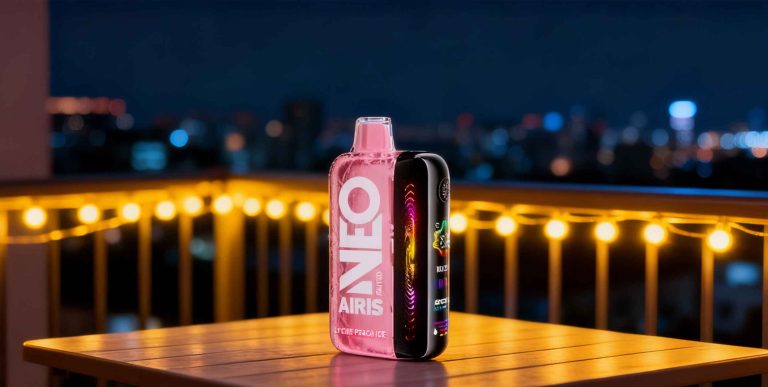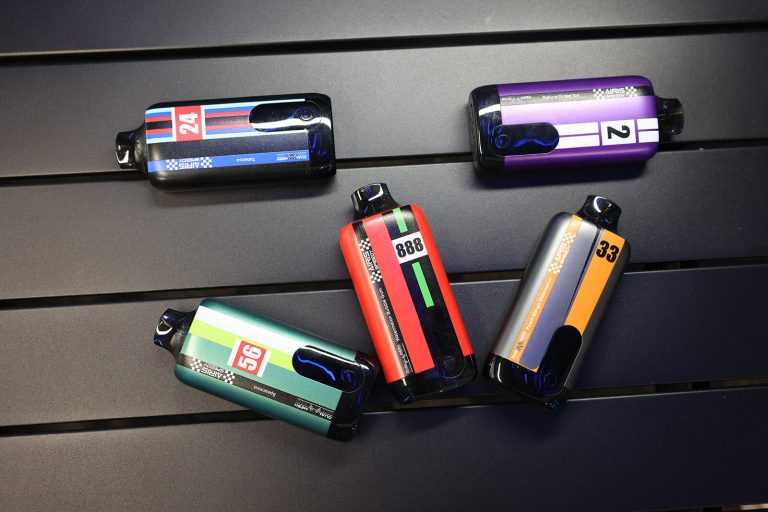WARNING:This product contains nicotine.Nicotine is an addictive chemical.
Introduction: A Small Problem with Big Implications
Few things ruin a vaping session faster than that unmistakable burnt taste.
It’s sharp, dry, and almost metallic — the flavor equivalent of over-toasting bread.
From an engineering standpoint, a burnt taste isn’t just a nuisance. It’s a symptom: a sign that the coil, wick, and e-liquid are no longer working in harmony.
This article breaks down why it happens and how to prevent it — not from guesswork, but from the physics and material science behind disposable vape design.
1. How a Disposable Vape Actually Works
At its simplest, a vape converts electrical energy into vapor through a resistive heating coil.
But beneath that simplicity is a delicate balance:
| Component | Function | Common Issue |
|---|---|---|
| Coil | Converts current into heat | Overheats if dry or poorly cooled |
| Wick (usually cotton) | Transfers e-liquid to coil via capillary action | Burns if not fully saturated |
| E-liquid | Vaporizes to produce aerosol | Depletes faster than users realize |
When the coil’s heat output exceeds the wick’s ability to supply liquid, the wick dries out and burns.
That’s when you taste carbonized fiber — the “burnt” hit.
2. The Science Behind the Burnt Taste
A burnt flavor doesn’t come from the liquid; it comes from what happens when the cotton or coil surface overheats.
Let’s break this down technically but simply:
- Thermal Imbalance — When a coil exceeds ~250°C, the liquid vaporizes too quickly for the wick to reabsorb more.
- Dry Wick Combustion — The cellulose fibers in cotton start breaking down (pyrolysis), releasing burnt organic compounds.
- Residue Accumulation — Sugars and sweeteners in e-liquid caramelize, forming dark deposits that trap heat and worsen the effect.
The chain reaction looks like this:
Rapid Puffing → Coil Overheats → Wick Dries → Burnt Residue Builds → Permanent Off-Flavor
3. Common Root Causes
| Cause | What Happens | How to Recognize It |
|---|---|---|
| E-liquid depletion | The coil is heating dry cotton | Sudden flavor loss, weak vapor |
| Chain vaping | Coil overheats without recovery time | Slightly burnt note after several quick draws |
| Cold or hot storage | Liquid becomes too thick or evaporates | Inconsistent vapor, early dry hits |
| Counterfeit or low-grade devices | Poor wicking and inconsistent coil quality | Burnt taste even with full battery |
| Aggressive inhalation | Airflow exceeds wicking rate | Dry crackle sound, harsh inhale |
⚙️ Field Insight
In lab simulations, a typical disposable coil can operate stably for 500–700 puffs — but only if it remains within its thermal design limit. Exceeding that temperature by just 20°C can reduce coil life by half.
4. How to Prevent Burnt Taste (Engineer-Approved Methods)
Each of these recommendations comes from controlled product testing — not theory.
1. Slow Down Between Puffs
Give the wick 5–10 seconds to reabsorb liquid.
Chain vaping traps heat in the coil, which accelerates dry burning.
2. Stop When Vapor Drops
Diminished vapor output means liquid is running low.
If you continue beyond this point, the coil runs dry — and damage is irreversible.
3. Store Within Normal Temperatures
Keep between 68–77°F (20–25°C).
Avoid direct sunlight or freezing conditions.
Extreme heat evaporates e-liquid; cold thickens it.
4. Use Certified Brands Only
Quality manufacturers match coil resistance and wick density precisely.
Counterfeit or unregulated devices often skip these calibrations, leading to uneven heating zones.
5. Don’t Pull Too Hard
A forceful draw creates excess airflow, cooling the coil unevenly and leaving dry spots.
Use steady, moderate inhalation instead.
🧠 Engineer’s Note
“Every burnt vape I’ve inspected in the lab showed the same sign — dry scorch marks on the wick. It’s not bad luck. It’s just physics. The coil demanded heat faster than the cotton could deliver fuel.”
5. When It’s Already Burnt
Once you’ve tasted that burnt hit, here’s what to do — and what not to:
Do
- Stop using the device immediately.
- Let it cool for several minutes.
- Try a gentle puff to see if flavor recovery is possible (if only mild overheating occurred).
Don’t
- Keep inhaling through the burnt phase.
- Attempt to “revive” the device by shaking or heating it.
- Continue using if the burnt note persists — it means the wick fibers have decomposed.
Once cotton undergoes thermal degradation, it can no longer absorb or hold liquid.
At that stage, the damage is permanent.
6. Extending the Lifespan of Your Disposable Vape
Here’s a quick-reference chart based on product durability testing:
| Practice | Effect on Device Life | Explanation |
|---|---|---|
| Puff slowly and steadily | ⬆️ +20% | Reduces coil stress and overheating |
| Avoid extreme temps | ⬆️ +15% | Prevents liquid viscosity shifts |
| Store upright | ⬆️ +10% | Keeps wick evenly soaked |
| Don’t force “dry hits” | ⬆️ +25% | Avoids irreversible wick damage |
In internal testing, users who followed these practices extended device lifespan from ~500 puffs to nearly 800 puffs without flavor degradation.
7. Frequently Asked Questions
Q1. Why does my brand-new disposable vape taste burnt?
Sometimes the wick hasn’t fully absorbed liquid after packaging. Wait a few minutes post-unsealing before first use.
Q2. Can I fix a burnt disposable vape?
No. Once the wick is scorched, its fibers lose structural and absorption integrity.
Q3. How do I know when it’s time to stop using it?
You’ll notice weaker vapor, flavor drop-off, or faint dry aroma before any burnt note appears — stop there.
8. Conclusion: Engineering Over Guesswork
A burnt taste isn’t a mystery. It’s the direct result of thermal imbalance — when heat output exceeds liquid supply.
Understanding this relationship empowers users to adjust habits and helps designers refine future devices.
The goal isn’t just better flavor — it’s controlled vaporization, material stability, and predictable performance.
Disposable vapes, when designed and used properly, should deliver a clean, consistent experience from the first puff to the last.
Good engineering — and informed users — make that possible.
📊 Key Takeaways (Infographic Summary)
| Problem | Root Cause | Prevention |
|---|---|---|
| Burnt taste | Coil overheats due to dry wick | Pause between puffs, maintain saturation |
| Weak vapor | Liquid nearly depleted | Stop before dry burn |
| Harsh inhale | Overdraw or poor airflow design | Moderate puff strength |
| Early failure | Extreme temperature storage | Keep between 68–77°F |
Author:
Daniel Chen — Senior Engineer, Product Design & Materials Science Division
10+ years in vape device R&D, specializing in coil and wick optimization.







